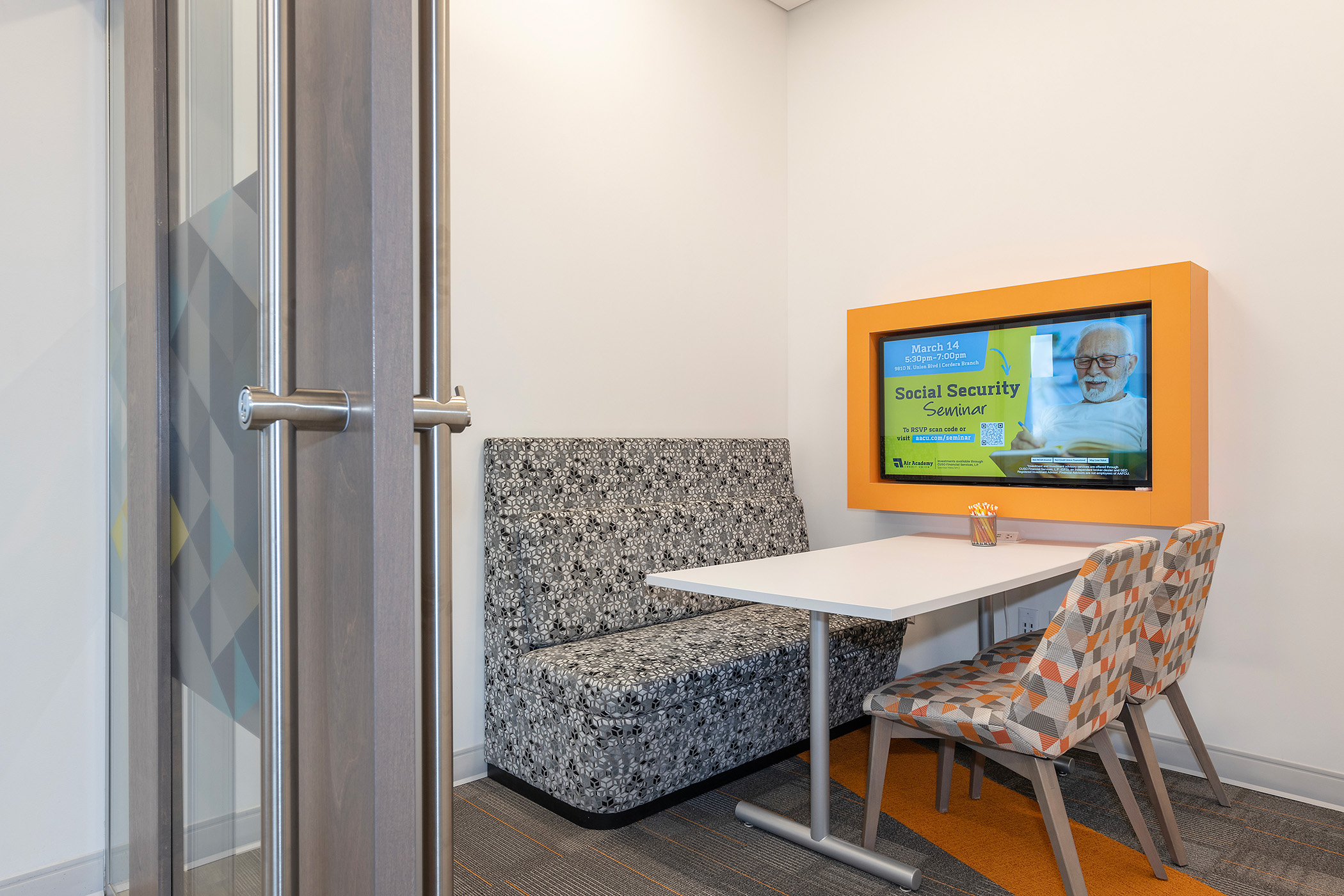4 Key Indicators It's Time for a New Operations Center
by La Macchia GroupGrowing financial institutions, expanding branch footprints, and a growing staff all sound like great things in the current state of the financial institution industry. But what happens when there aren't enough tables in the lunch room, or company-wide meetings no longer fit in your conference room? Does your current operations center have the capabilities to support an expansion? Take a look at some of the indicators that signal it's time to upgrade your operations center.
1. LIMITED CAPACITY: WHEN THE OFFICE CAN'T KEEP UP
As your financial institution grows, the demand for workspace grows alongside. Desks get shifted closer together, meeting rooms and collaboration spaces become a prize given to the fastest to reserve the space, and employees grow tired of the constant obstacles of competing with their team. Expecting colleagues to cohabitate on each other's heels is one of the fastest ways to burn out a team.
When employees feel cramped, distracted, and unable to perform their best work, morale and productivity take a hit. A lack of space doesn’t just create discomfort—it stifles collaboration, innovation, and overall efficiency. As frustration builds, top talent may start looking for opportunities elsewhere, seeking a workplace that better supports their needs.
A well-designed operations center isn’t just about square footage; it’s about creating an environment that fosters productivity, enhances employee satisfaction, and accommodates future growth. If your team is struggling with space limitations, it may be time to consider a new facility that aligns with your institution’s evolving needs.

2. OUTDATED TECHNOLOGY: WHEN LEGACY SYSTEMS ARE NO LONGER EFFICIENT
Bringing your workforce together in a centralized operations center addresses more than just space constraints, it creates opportunities for greater efficiency, collaboration, and technological advancement. As financial institutions adopt innovations like ITMs with universal video tellers, automation becomes critical to supporting these systems. A centralized workforce enables greater flexibility in job functions, allowing employees to transition between branch and office settings as needed.
Employees thrive in a forward-thinking, well-equipped environment, improving job satisfaction and retention. If your institution is not prioritizing a technology-forward, consumer-centric approach, you risk falling behind both in market relevance and in attracting top talent.

3. OPERATIONALLY INEFFICIENT: WHEN YOUR SPACE IS FALLING BEHIND
Much like the previously discussed banking technology, the materials and systems used in commercial buildings have evolved significantly over the past 20-30 years, which may be the age of your existing operations center. Updated glazing, insulation, and HVAC systems can drastically lower operating costs while enhancing comfort and employee morale. In fact, replacing outdated systems with newer, more efficient ones can cut utility bills in half, resolving issues like inconsistent temperature control once and for all.
Beyond just comfort, modern architectural practices like daylighting; strategically placing windows, skylights, and reflective surfaces to maximize natural light, can reduce electricity use and create a brighter, more inviting work environment. This approach not only lowers energy costs but also provides a more pleasant atmosphere, moving away from outdated, fluorescent-lit spaces. Combined with updated building materials and energy-efficient HVAC systems, a new facility can eliminate sky-high energy bills and contribute to both financial savings and a more sustainable, eco-friendly environment.

4. TALENT RETENTION CHALLENGES: WHEN TOP TALENT ISN'T INTERESTED
Attracting and retaining top talent requires more than just a competitive salary and benefits package. Employees, especially younger generations, are placing increasing importance on the work environment. A modern, comfortable, and well-located operations center is no longer a luxury; it’s an essential factor in creating a workplace that supports both employee satisfaction and productivity.
If your current facility lacks key amenities such as collaborative spaces, natural light, or high-speed internet, or if it’s difficult for employees to commute to, these challenges can quickly lead to frustration. Cramped, outdated spaces can affect the overall atmosphere and work experience, leading to higher stress levels and burnout. This, in turn, can result in higher turnover rates and difficulty attracting skilled candidates who are increasingly looking for workplaces that prioritize well-being, convenience, and flexibility.
Investing in a modern operations center goes beyond addressing space constraints; it sends a message that your organization values its employees’ comfort and needs. A thoughtfully designed space with amenities like open workstations, breakout rooms, ergonomic furniture, and cutting-edge technology helps to foster creativity, collaboration, and focus. In addition, a well-located operations center, close to transportation hubs or in an area with desirable surrounding amenities (like lunch spots, gyms, or retail), can reduce commute times, making it easier for employees to maintain a healthy work-life balance.

WHAT'S NEXT?
If you found yourself in agreement with these four reasons and don’t know where to start, you are not alone. Expanding your space to accommodate years of growth doesn’t have to be scary with an expertly informed plan, from demographics to location, a solid path forward can be achieved without sending leadership into a panic. La Macchia Group can help your Financial Institution with a ROI focused expansion plan, contact us to learn more.

.png?width=248&height=73&name=Logo%20w%20Tag%20-%20Color@300x%20(1).png)
 ' />
' />



